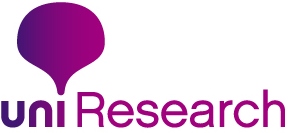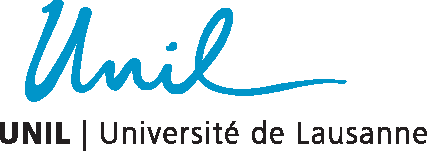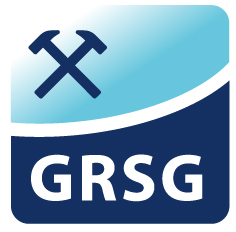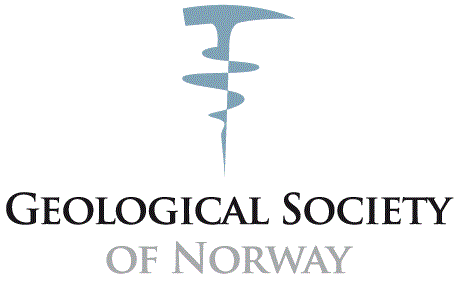Sponsors
The VGC organisers are proud to have the following companies and organisations sponsoring the meeting.
Research Council of Norway
The Research Council of Norway is a Norwegian government agency responsible for awarding grants for research as well as promoting research and science. It also advises the Government in matters related to research, and is subordinate to the Norwegian Ministry of Education and Research. The Research Council of Norway is supporting the 2nd Virtual Geoscience Conference through the FRINATEK programme (Project number 249999).
BRGM (French Geological Survey)
The BRGM Carnot Institute implements partnership-based research with industrial sectors and companies of every size. The aim is to deliver innovative solutions in different areas, including soils and subsoils, raw materials, water resources or the prevention of natural and environmental risks. The economic sectors directly concerned include construction, energy, water, mineral industries, environmental services and eco-technologies.
HySpex
Norsk Elektro Optikk AS (NEO) was established in 1985 as a privately owned research company within the field of electro optics. The founders had background from the Norwegian Defense Research Establishment, which for the last 30-40 years has been the leading research organisation in electro optics in Norway. The company has grown to be the largest independent research and development organization in electro optics in Norway, and has established itself as a reputed manufacturer of advanced products for an international market.
Hyperspectral imaging activities at NEO started in 1995 with the HISS (Hyperspectral Imager for Small Satellites) project for ESA. R&D activities in hyperspectral imaging have been partly funded through EU project participation, as well as projects funded by the Ministry of Defense and the Research Council of Norway, and internal funding through commercialization of the HySpex technology for lab, field and airborne (manned and UAVs) applications. The NEO facilities include specialized equipment in the field of optical technologies, such as spectral and radiometric calibration sources, lab equipment for focusing, adjusting, testing and characterizing hyperspectral imaging systems. Furthermore, more general labs for laser technology, optics and electronics are also available in-house, together with a mechanical workshop for fast prototyping. Visit the HySpex website.
MEAS-IT
MEAS-IT is a French startup created in 2015 by Sébastien Champagne, an optronic engineer with background in ENSSAT (France), and Fabrice Daumard, PhD (Polytechnique France). They met at the National Centre for Scientific Research (CNRS), where they became specialists in passive fluorescence remote sensing using atmospheric oxygen band (low light, strong absorption band, small FWHM: 0.5 - 1nm).
MEAS-IT develops customs multispectral sensors and lidar sensors for any application spanning UV to SWIR. The specificity of MEAS-IT sensors is the ability to detect low light in spectral bands, which can be adjusted to your needs: specific wavelengths – continuous or discrete – from 300 nm to 2700 nm with defined FWHM per band.
Wiley
Wiley is a global provider of knowledge and knowledge-enabled services in areas of research, professional practice and education. Main activities are developing digital education, learning, assessment and certification, partnering with societies, supporting researchers to communicate discoveries. Our digital content, books and 1600 online journals build on a 200-year heritage of quality publishing, including 80 Earth and environmental science journals and a books programme. Partnerships include key societies and AGU, the world’s leading society.
Wiley publishes The Photogrammetric Record jointly with the Remote Sensing and Photogrammetry Society, and this journal will publish a special issue of papers from VGC 2016. To sign up to receive information about the forthcoming content in The Photogrammetric Record and this special issue click here. Follow Wiley news on @earth_wise.
3D Laser Mapping
3D Laser Mapping is a world leading geospatial technology supplier and innovator. Underpinned by two decades of experience, the company provides 3D technology across the UK, South Africa, USA and Australia via its network of branch offices and international distributors.
Working alongside some of the world’s biggest mining companies, governments, universities, blue-chip firms and operators of highways, power lines and railways, 3D Laser Mapping helps its customers to capture and understand their world in 3D. However, mapping and monitoring is just the start. The real benefits come from the information that 3D Laser Mapping helps its customers to uncover. These findings are used to improve the way customers make important decisions, allowing choices to be based on reliable, high quality measurements.
As well as providing cutting edge technology, technical support, training and consultancy services, 3D Laser Mapping’s in-house research and development hub leads the way in product innovation. As a centre of excellence, the dedicated research and development team work alongside clients to customise systems, as well as masterminding the next geospatial ‘game changers’. Ultimately, 3D Laser Mapping’s technology helps businesses and organisations to monitor what has gone before and what is happening now, to drive a safe, informed and profitable future.
3D Teknikk
3D Teknikk AS is a company with base in Bergen, Norway. We provide complete or individualized 3D services for a wide range of industries and developers. The process may include support, design, prototyping, and 3D printing. By use of advanced CAD and design software, qualified personnel of engineers, we can assist you through the whole process. We may also assist with design changes and technical 3D and 2D drawings. Our 3D printers can make your models “come to life” to get a first impression of your final product.
We continuously update our software and hardware to keep up with development and increased need from our customers.
University of Lausanne
The University of Lausanne is a higher teaching and research institution composed of seven faculties where approximately 14,300 students and 3,000 researchers work and study. UNIL focuses on several academic disciplines, especially Medicine, Life Sciences, Geosciences, Environment, Business, Humanities and Social Sciences. An emphasis is placed on an interdisciplinary approach, with close cooperation between students, teaching staff, and professors. UNIL hosted the 1st VGC in 2014 (website here), through the world-leading Risk Group.
University of Bergen
The University of Bergen (UiB) is one of Norway's main universities, and is known internationally for its research output. The university is based in the heart of the city, and has around 15,000 students across six faculties, including over 1500 international students. The Department of Earth Science conducts research into marine geoscience, petroleum geology, climate and earthquake seismology.
Geological Remote Sensing Group
The Geological Remote Sensing Group (GRSG) is a special interest group of The Geological Society and the Remote Sensing and Photogrammetry Society, based in the UK but active internationally. The scope of the group covers all aspects of remote sensing for geological applications, and its membership includes geologists and remote sensing experts employed within industry, academia and government agencies. GRSG’s activities are highly complementary to the scope of VGC.
Geological Society of Norway
The Geological Society of Norway (NGF), founded in 1905, is a multidisciplinary scientific and professional society comprising the majority of the country's practising geoscientists and students of geoscience. The society's main publication is the Norwegian Journal of Geology, and the Winter Meeting is held every two years to showcase the developments in the discipline. NGF aims to be the disseminator of geoscience knowledge and competence to society. To this end, NGF is a leading voice in societal challenges related to geoscience, infrastructure and the use of natural resources.
Important Dates
- Abstract submission
May 08, 2016 (closed) - Acceptance
June 29, 2016: authors notified - Conference registration
Standard rate: Sept 20, 2016 - Short courses/workshop
September 21, 2016 - Conference
September 22-23, 2016 - Special issue paper submission
January 15, 2016 (closed)













